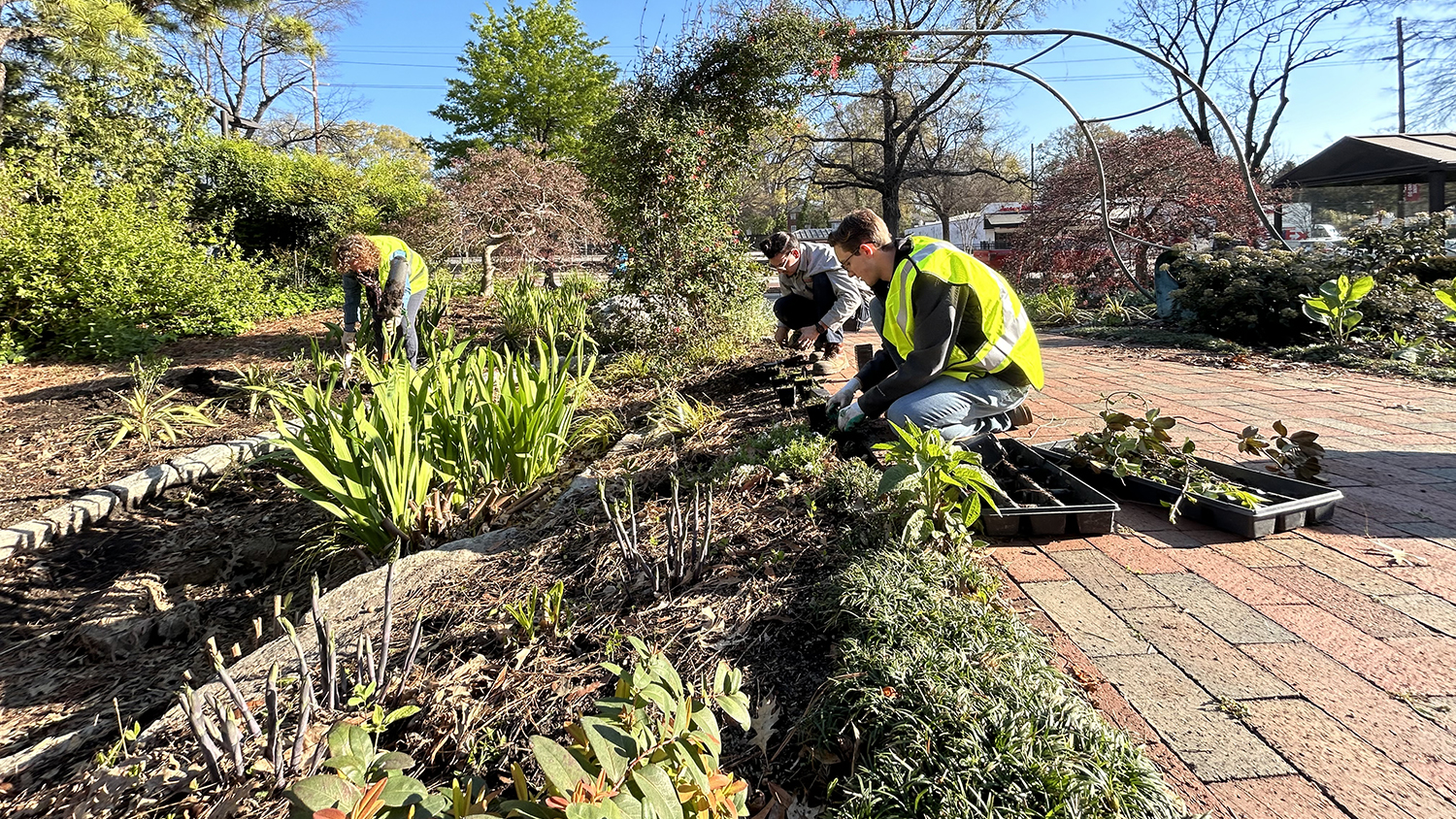N.C. State scientist searches the world for plants that help human health
From Bhutan’s rugged Himalayas to Ecuador’s cloud forest to Alaska’s frozen tundra, Dr. Mary Ann Lila searches high and low for what could be called pharmaceutical plants – and not the brick-and-mortar kind that make medicines. She seeks the leafy kind, full of chemical compounds that can stave off human disease, promote endurance and strength, improve metabolism and erase signs of aging.
Lila works from the N.C. Research Campus in Kannapolis, where she directs N.C. State University’s Plants for Human Health Institute. The institute strives to shift the way the American public views and uses plant food crops as sources not just for nutrients but also for phytochemicals that protect and enhance human health.
The two-year-old institute, part of the College of Agriculture and Life Sciences, takes a multidisciplinary approach to pursuing that goal through research related to plant genomics and metabolomics, biochemistry, breeding and postharvest physiology.
Lila, a professor in the Department of Food, Bioprocessing and Nutrition Sciences, is one of five N.C. State faculty members now working in the institute, which is expected to grow to 15 faculty members. Her current research focuses on three areas: studying health-enhancing compounds in blueberries and other berries, isolating phytochemicals that counteract malaria, and working with scientists and students from around the world to explore natural products for biomedical use.
During a recent seminar at the research campus, Lila discussed the latter project, which has taken her to Central and South Asia, New Zealand and Australia, Alaska and the Dakotas, Central and South America, and Africa.
These efforts are part of the Global Institute for BioExploration, or GIBEX, a research and development network Lila helped start while she was on the University of Illinois at Urbana-Champaign faculty. The partnership also includes N.C. State and Rutgers universities.
The group works with scientists, students and traditional healers in developing nations and with Native Americans to identify plants that hold promise for human health.
GIBEX doesn’t take any plants from the locations where it works, but it trains and equips local scientists with cost-effective drug-discovery tools and technologies that are portable and easy to use, Lila said. That way, discoveries can be made in the field, with the intellectual property remaining with the local population.
While GIBEX scientists use modern research-based technology to screen plants for medicinal properties, they depend on centuries-old native understanding of the healing properties of plants as their starting point.
“We work a lot with traditional healers or the scientists at the university who still, a lot of times, have a foot in both camps: They are modern scientists; they use advanced technologies such as high performance liquid chromatography, but they still practice some traditional medicine. It’s what they grew up with,” Lila explained.
“But mostly the traditional medicine hasn’t been validated. They don’t have the capacity to validate it. They don’t have the instrumentation. They don’t have the money to do the bioassays we can do here. So what we are really doing is putting some substance behind what your grandmother always told you.”
Since GIBEX was started in 2003-04, it has used this approach to identify 17 plant extracts that have been licensed to pharmaceutical companies, Lila said.
These extracts involve so-called secondary compounds — phytochemicals that aren’t directly involved in a plant’s normal growth, development or reproduction, she explained. Instead, these chemicals are created to help the plants protect and defend themselves and attract pollinators.
“Pigments such as carotenoids in tomatoes and anthocyanins in blueberries are examples. They won’t necessarily accumulate in the plant unless the plant is under stress, and that’s why wild plants tend to have the highest concentrations of these secondary components,” she said.
“Now interestingly, these same components that a plant uses to enhance its own survival under stress can interact with human therapeutic targets when the plant is ingested as food,” she added. “They will interact with human therapeutic targets to specifically counteract human disease and improve human metabolism.”
While Lila spends some of her time in the field looking for plants with such properties, she also conducts complex laboratory research aimed at understanding the precise health benefits of particular phytochemicals and at shedding light on the previously hidden ways that the chemicals build people’s muscles, boost immunity, inhibit cancer, reduce inflammation and more. One of Lila’s recent studies found, for example, that concentrated amounts of blueberry anthocyanin reduced glucose levels in diabetic mice better than metformin, a drug widely prescribed for type 2 diabetes.
In looking ahead, Lila said she hopes to continue to discover plants that could become agricultural crops that boost human health.
—Dee Shore


